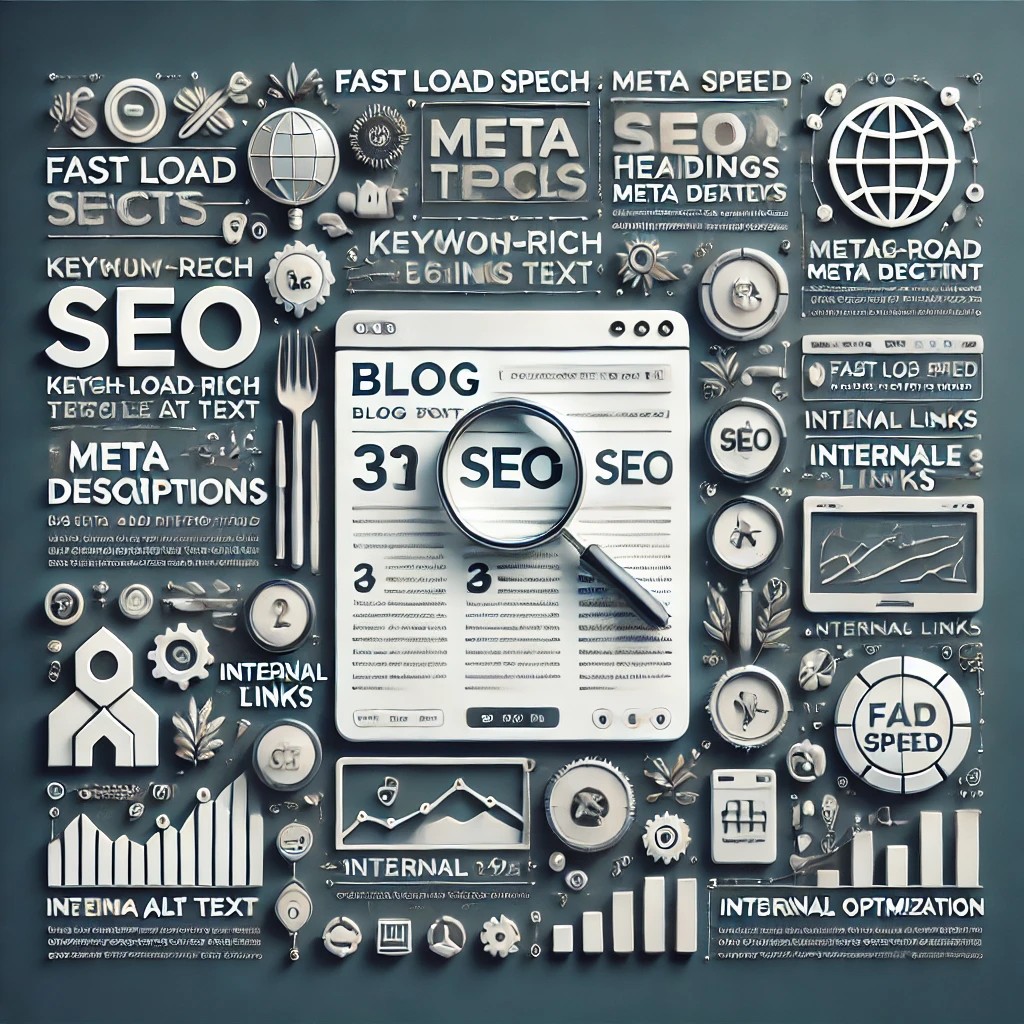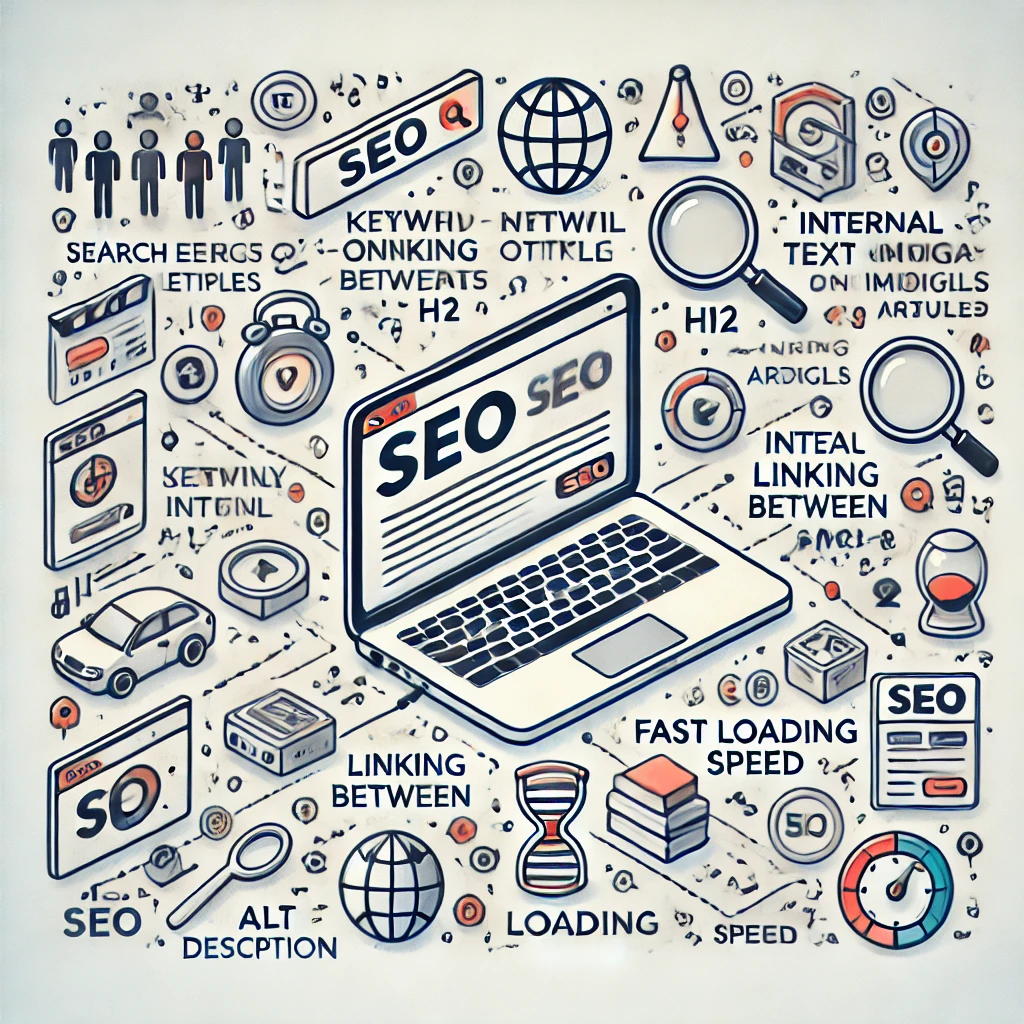“How to Improve On-Page SEO Tips for Better Search Engine Rankings” – Learn proven strategies to optimize your blog posts for search engines, including keyword placement, mobile optimization, meta tags, and internal linking. This guide covers essential on-page SEO techniques to help you rank higher and attract more organic traffic. Whether you’re a beginner or an experienced blogger, these tips will boost your site’s visibility and performance. Improve load speed, enhance user experience, and use multimedia effectively to engage your audience. Unlock your site’s potential with this comprehensive on-page SEO optimization guide!ON PAGE SEO

Why On Page SEO Important?
On-page SEO is crucial because it directly affects how well a website ranks in search engine results and how users engage with your content. Here are several reasons why on-page SEO is important:
1. Improves Search Engine Ranking
Search engines like Google use on-page SEO signals to understand the content and relevance of a page. Properly optimized pages have a higher chance of ranking on the first page for relevant keywords, driving more organic traffic.
2. Enhances User Experience
On-page SEO focuses on optimizing the content, structure, and design of a webpage, which improves usability. Faster load times, mobile-friendliness, and clean layouts help users engage better with the content, reducing bounce rates and increasing dwell time.
3. Optimizes for Search Intent
By aligning your content with specific keywords and user intent, you ensure that search engines recognize your page as a valuable resource. This helps attract the right audience, increasing conversions and engagement.
4. Boosts Local SEO
For businesses targeting local markets, on-page SEO practices like optimizing for local keywords, creating location-specific content, and using schema markup can improve visibility in local search results.
5. Increases Click-Through Rates (CTR)
A well-optimized meta title and description increase the likelihood that users will click on your search result, leading to more traffic. Higher CTRs can also positively influence search rankings over time.
6. Supports Better Crawlability
Optimized URLs, internal linking, and a clean structure help search engine crawlers index and understand your pages more efficiently. This ensures that all your important pages are discovered and ranked.
7. Improves Content Readability and Engagement
On-page SEO encourages the use of headings, subheadings, bullet points, and multimedia, making content more scannable and engaging for readers. This keeps visitors on your site longer, which can signal to search engines that your page provides value.
8. Builds Authority and Trust
By linking to authoritative external sources and internally to other relevant content, on-page SEO helps establish your site as a trusted, valuable resource. This boosts credibility with both users and search engines.
9. Supports Other SEO Efforts
On-page SEO complements off-page SEO strategies, such as link-building, by ensuring that when external sites link to your page, the content is optimized for the right keywords and structure, boosting overall rankin potential.

Top 12 In-Page SEO Strategies to Boost Your Blog’s Search Ranking
Improving in-page SEO for a blog post involves optimizing both the content and structure of your post to rank higher in search engine results. Here are some effective strategies:
1. Target the Right Keywords
Keyword Research: Use tools like Google Keyword Planner, Ahrefs, or SEMrush to find relevant keywords with good search volume and low competition.
Long-Tail Keywords: Include longer, more specific keywords to attract targeted traffic.
Primary Keyword Placement: Place your main keyword in the title, first paragraph, headings, and meta description naturally.
2. Write SEO-Friendly Titles and Meta Descriptions
Title Tag: Ensure your title is catchy, includes the target keyword, and is under 60 characters.
Meta Description: Summarize the content and include your primary keyword. Keep it between 150-160 characters to enhance click-through rates (CTR).
3. Use Proper Heading Structure (H1, H2, H3)
H1: Your main title should be wrapped in an H1 tag, and it should only appear once on the page.
Subheadings (H2, H3): Organize your content into sections using H2 and H3 tags for better readability and SEO.
4. Optimize for Readability
Short Paragraphs: Break content into small, easy-to-digest paragraphs (2-3 sentences).
Bullet Points and Lists: Use these for easy scanning of information.
Readable Fonts: Ensure text is legible on all devices.
5. Internal and External Linking
Internal Links: Link to other relevant content within your blog to boost navigation and decrease bounce rate.
External Links: Link to authoritative sources to improve the credibility of your content.
6. Optimize Image SEO
Alt Text: Use descriptive, keyword-rich alt tags for all images.
Image Compression: Compress images to improve page load speed without compromising quality.
File Names: Use keyword-friendly names for image files before uploading.
7. Mobile Responsiveness
Responsive Design: Ensure your blog is mobile-friendly, as Google prioritizes mobile-first indexing.
Check Mobile Speed: Use tools like Google PageSpeed Insights to test and optimize loading times for mobile users.
8. Page Load Speed
Fast Loading Time: Minimize CSS, JS, and HTML to reduce loading time.
Caching: Use browser caching to store static files and improve speed.
9. URL Structure
Short and Descriptive URLs: Keep URLs short, readable, and include the primary keyword.
Avoid Special Characters: Use hyphens (-) instead of underscores (_) and avoid special characters in URLs.
10. Create Quality, Engaging Content
High-Quality Content: Make sure the blog post answers the searcher’s intent comprehensively and provides real value.
Word Count: Aim for longer, more in-depth posts (1200+ words), but don’t add fluff just to increase length.
Use Multimedia: Include images, infographics, videos, or GIFs to engage readers.
11. Schema Markup
Rich Snippets: Use schema markup (e.g., for articles, reviews, products) to help search engines understand your content better and potentially earn rich results.
12. Update Content Regularly
Content Freshness: Periodically update your blog posts to keep the information current and relevant.
FAQ:-
1. What is in-page SEO?
In-page SEO, also known as on-page SEO, refers to the practice of optimizing individual blog posts or pages to improve search engine rankings and attract organic traffic. It involves optimizing both the content and the HTML source code of a page.
2. Why is keyword research important for in-page SEO?
Keyword research helps you find the terms and phrases that your target audience is searching for. By identifying relevant keywords with good search volume and low competition, you can create content that meets user intent, leading to better rankings and more traffic.
3. What is the ideal length for an SEO-friendly title tag?
The ideal length for a title tag is under 60 characters. This ensures that the title is not cut off in search engine results and remains fully visible to users, making it more clickable.
4. How does a meta description impact SEO?
A well-written meta description, around 150-160 characters, helps improve click-through rates (CTR) by giving users a preview of the content. It should summarize the post, include the target keyword, and encourage users to click through to your blog.
5. Why is heading structure important?
A proper heading structure (H1, H2, H3) makes content easier to read and navigate for both users and search engines. Using headers strategically helps search engines understand the hierarchy of the content, improving SEO.
6. How can internal linking improve my blog’s SEO?
Internal linking connects related content within your site, improving user navigation and reducing bounce rate. It also helps search engines crawl your website more efficiently, enhancing your blog’s overall SEO performance.
7. What is alt text, and how does it help with image SEO?
Alt text is a description of an image that helps search engines understand its content. Including keyword-rich alt text for images improves accessibility, user experience, and SEO by allowing images to rank in search results.
8. How important is mobile responsiveness for SEO?
With Google’s mobile-first indexing, it is crucial that your blog is optimized for mobile devices. A responsive design ensures that your blog functions well on all screen sizes, enhancing user experience and improving SEO rankings.
9. What is the role of page load speed in SEO?
Page load speed directly impacts user experience and SEO rankings. Faster-loading pages are more likely to retain visitors and rank higher on search engines. Compressing images, minimizing CSS, JS, and HTML, and enabling caching can improve load times.
10. Why is it important to have a short, descriptive URL structure?
Short and descriptive URLs that include the primary keyword are easier for both users and search engines to understand. Avoid special characters and underscores, and use hyphens to separate words for better readability.
11. How does schema markup help SEO?
Schema markup provides search engines with additional context about your content, increasing the chances of earning rich snippets like reviews, FAQs, and product listings in search results, which can boost your click-through rate and visibility.
12. How often should I update my blog posts?
Regularly updating blog posts with fresh, relevant information helps maintain their relevance in search engines and can improve rankings over time. Aim to review and update older posts periodically to ensure accuracy and effectiveness.

I like you blog